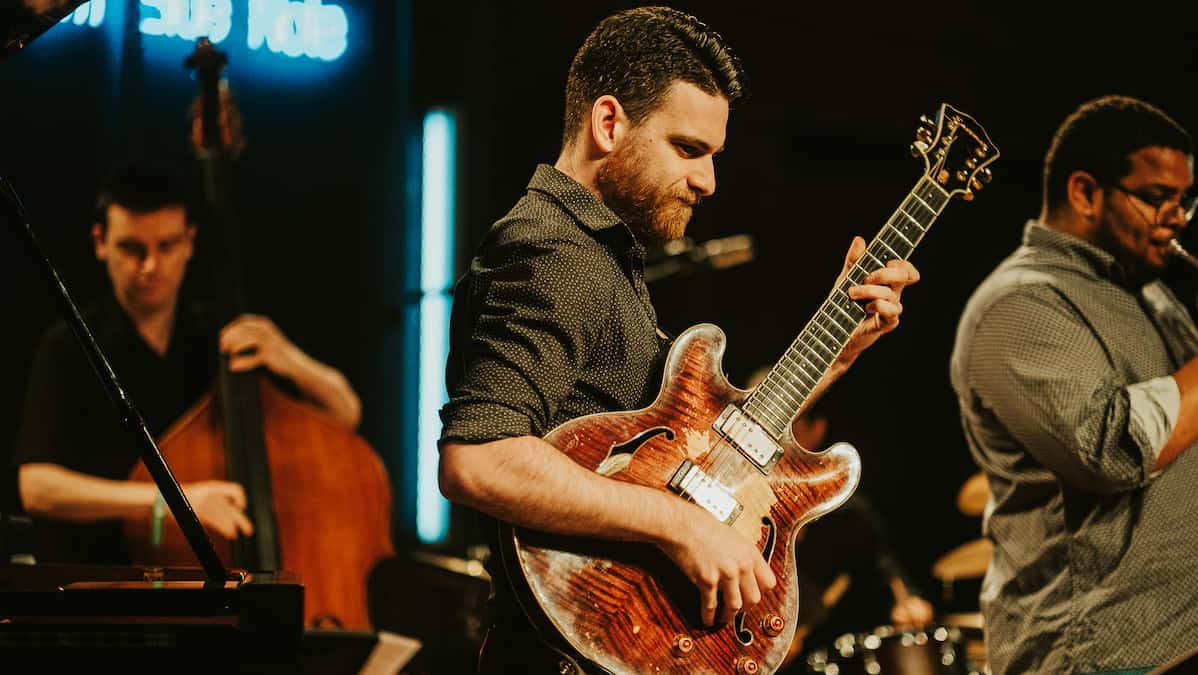Columns
Close the Book! Learning Music by Ear

JGT Contributor Zakk Jones shares a valuable lesson regarding ‘learning music by ear’.
What’s the first thing you do when you decide to learn a new piece of music? Let me guess…you pull out a lead sheet, download a dark web PDF, or grab your dusty Rick Springfield tab book? If your initial answer has anything to do with “reading” some notes on a page, then I would like to firmly, yet lovingly, offer you some salvation from your dark and evil habits. As professional musicians we most likely have been told plenty of times that you MUST know how to read if we could ever possibly think about playing for a living. You probably had some JK Simmons looking teacher screaming; “Your ability to eat up those black dots and squiggly rests will keep you from the poor house! Now gimme 20…reps of Kreutzer etudes!” Sounds familiar right? Okay…maybe not. But time and time again I’ve see this awful conflation;
My musical reading ability = My ability to learn more music.
I would like to assert the notion that your musical comprehension, retention
Sheet music has a funny way of letting us think that we have everything we need to learn any given piece of music.
Tempo, meter, key, form
How many of you have listened to a recording of this song?
Have you listened to it more than once?
How about more than 5 times?
Have you listened to more than one particular recording?
More than 3?
Could you sing the melody?
How about play the melody?
Do you know what instruments and sections have the melody in the arrangement?
How many times does the melody get passed around?
As both a student and educator I’ve seen in-person the answers to these questions and they reveal an existential crisis in how we approach learning music. A lot of times there is a fatal lack of awareness when we’re playing music by looking at a stand. You may be saying to yourself “I have a BAD ear, I simply cannot learn things by memory, how dare you tell me to simply burn my
#1 – Play the simplest melodies you can think of
Happy Birthday, Mary Had A Little Lamb, Twinkle Twinkle, London Bridge…these are all childhood melodies that virtually everyone sings at some point in Kindergarten. You know them by ear. You can sing these, and probably a dozen others, right now on the spot if I asked you. Now play them on your instrument. Is it a little harder? That’s okay. Although it may seem literally childish, songs like these can help you identify weak spots in your musical ear as applied to your instrument without having to learn entirely new material.
#2 – Separate musical elements
Too often we forget that we can learn music by getting to the nuts and bolts of the particular piece. Are you having trouble with the rhythms of a syncopated melody? Try playing an entire head on just one note so you can stop worrying about getting the notes right and focus on your time, phrasing, articulation and dynamics. Look at this reduction of the blues tune “Sonnymoon for Two” by Sonny Rollins. By working out the basic elements of rhythm, swing and articulation, you will be surprised at how complete it will sound once you simply add the notes. Tie this in with an understanding of how the melody fits within a key via intervals and scale degrees, and you start to build crucial connections in your ear between all of these elements.



Where else can you play the melody in the same octave, on a different part of the guitar?
Can you play it in different octaves?
How about different articulations?
Now transpose the tune to another key!
Continue to the remainder of the lesson…
-
Jazz Guitar Lessons2 weeks ago
New JGT Guitar Lesson: Analyzing “Without A Song”
-
Jazz Guitar Lessons4 weeks ago
New JGT Guitar Lesson: Considering “Falling Grace”
-
Artist Features1 week ago
New Kurt Rosenwinkel JGT Video Podcast – July 2024
-
Artist Features2 weeks ago
JGT Talks To Seattle’s Michael Eskenazi




















